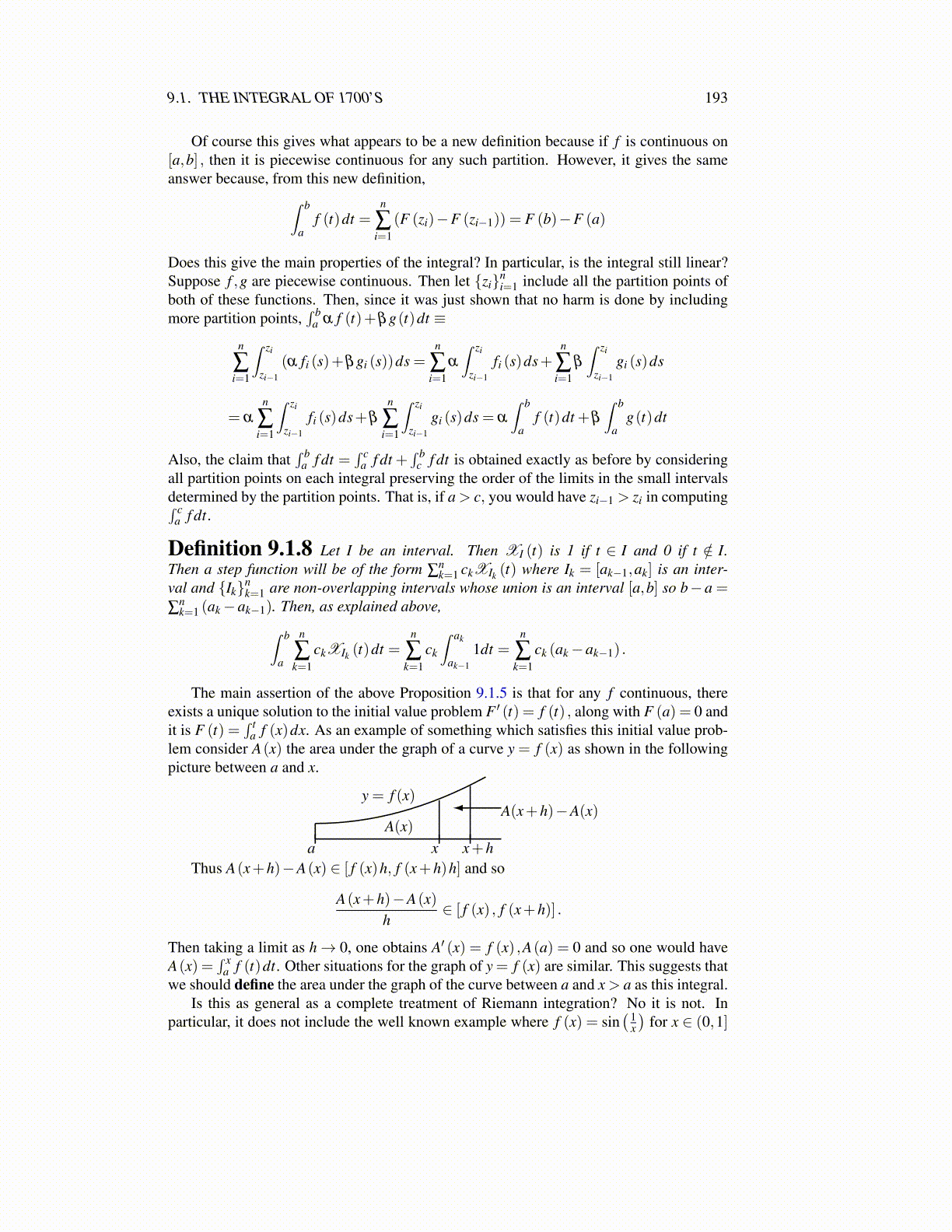
9.3. FUNDAMENTAL DEFINITIONS AND PROPERTIES 193
Without loss of generality Py contains x because from what was just shown you could addin the point x and the approximation of V (Py,g) to V[a,y] (g) would only be better. Thenfrom the definition,
V[a,y] (g)−V[a,x] (g)≥V (Py,g)−(V(P[a,x],g
)+ ε)
≥ |g(y)−g(x)|− ε ≥ g(y)−g(x)− ε
and since ε is arbitrary, this establishes 9.1. This proves the first part of the proposition.Now suppose g(x) = g1 (x)−g2 (x) where each gi is an increasing function. Why is g
of bounded variation? Letting x < y
|g(y)−g(x)| = |g1 (y)−g2 (y)− (g1 (x)−g2 (x))|≤ (g1 (y)−g1 (x))+(g2 (y)−g2 (x))
Therefore, if P = {x0, · · · ,xn} is any partition of [a,b]
n
∑i=1|g(xi)−g(xi−1)| ≤
n
∑i=1
(g1 (xi)−g1 (xi−1))+(g2 (xi)−g2 (xi−1))
= (g1 (b)−g1 (a))+(g2 (b)−g2 (a))
and this shows V[a,b] (g)≤ (g1 (b)−g1 (a))+(g2 (b)−g2 (a)) so g is of bounded variation.
The following is the definition of the Riemann Stieltjes integral.
Definition 9.3.3 A bounded function f defined on [a,b] is said to be Riemann Stielt-jes integrable if there exists a number I with the property that for every ε > 0, there existsδ > 0 such that if
P≡ {x0,x1, · · · ,xn} , a = x0 < · · ·< xn = b
is any partition having ∥P∥< δ , and zi ∈ [xi−1,xi] ,∣∣∣∣∣I− n
∑i=1
f (zi)(g(xi)−g(xi−1))
∣∣∣∣∣< ε.
The number∫ b
a f (x) dg(x)is defined as I. I will denote this Riemann Stieltjes sum approx-imating I as ∑P f (zi)(g(xi)−g(xi−1)). When f is Riemann Stieltjes integrable on [a,b]with respect to g as just described, this is denoted as f ∈ R([a,b] ,g) or simply as R [a,b] ifthe definition is clear for g.
A special case is the following definition.
Definition 9.3.4 The Riemann integral is a special case of the above in which theintegrator function is g(x) = x. We write
∫ ba f (x)dg(x) in the form
∫ ba f (x)dx to signify the
Riemann integral.
There is only one possible number I satisfying the above definition.
Lemma 9.3.5 The integral∫ b
a f (x) dg(x) is well defined in the sense that if there is sucha number I, then there is only one.